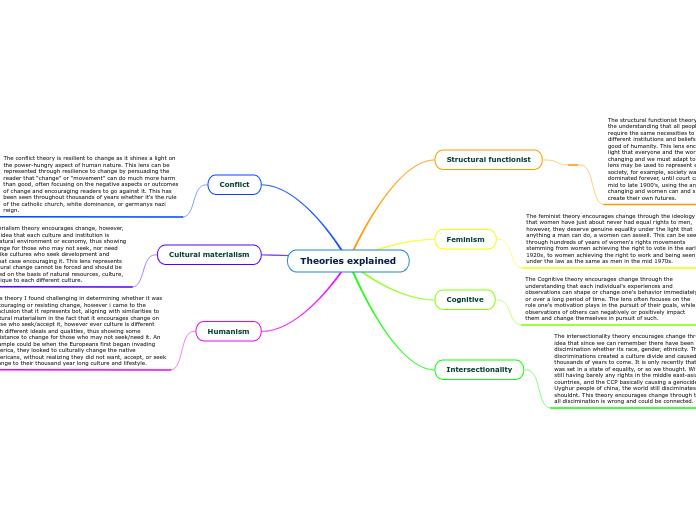
The structural functionist theory encourages change through the understanding that all people are different, however they require the same necessities to live, in doing so, within different institutions and beliefs, working towards the greater good of humanity. This lens encourages change through the light that everyone and the world around us is constantly changing and we must adapt to fulfil basic human needs. This lens may be used to represent encouraging change in a society, for example, society was predominantly male dominated forever, until court cases started to be won in the mid to late 1900’s, using the argument that society is ever changing and women can and should be able to choose and create their own futures.
The feminist theory encourages change through the ideology that women have just about never had equal rights to men, however, they deserve genuine equality under the light that anything a man can do, a women can aswell. This can be seen through hundreds of years of women's rights movements stemming from women achieving the right to vote in the early 1920s, to women achieving the right to work and being seen under the law as the same as men in the mid 1970s.
The Cognitive theory encourages change through the understanding that each individual's experiences and observations can shape or change one's behavior immediately, or over a long period of time. The lens often focuses on the role one's motivation plays in the pursuit of their goals, while observations of others can negatively or positively impact them and change themselves in pursuit of such.
The intersectionality theory encourages change through the idea that since we can remember there have been forms of discimination whether its race, gender, ethnicity. These discriminations created a culture divide and caused hatred for thousands of years to come. It is only recently that the world was set in a state of equality, or so we thought. With women still having barely any rights in the middle east-asian countries, and the CCP basically causing a genocide with the Uyghur people of china, the world still disciminates where it shouldnt. This theory encourages change through the idea that all discimination is wrong and could be connected.
The conflict theory is resilient to change as it shines a light on the power-hungry aspect of human nature. This lens can be represented through resilience to change by persuading the reader that “change” or “movement” can do much more harm than good, often focusing on the negative aspects or outcomes of change and encouraging readers to go against it. This has been seen throughout thousands of years whether it's the rule of the catholic church, white dominance, or germanys nazi reign.
The cultural materialism theory encourages change, however, it represents the idea that each culture and institution is unique to their natural environment or economy, thus showing resistance to change for those who may not seek, nor need such change, unlike cultures who seek development and change, and in that case encouraging it. This lens represents the idea that cultural change cannot be forced and should be accepted or denied on the basis of natural resources, culture, and economy, unique to each different culture.
This theory I found challenging in determining whether it was encouraging or resisting change, however i came to the conclusion that it represents bot, aligning with similarities to cultural materialism in the fact that it encourages change on those who seek/accept it, however ever culture is different with different ideals and qualities, thus showing some resistance to change for those who may not seek/need it. An example could be when the Europeans first began invading america, they looked to culturally change the native americans, without realizing they did not want, accept, or seek change to their thousand year long culture and lifestyle.